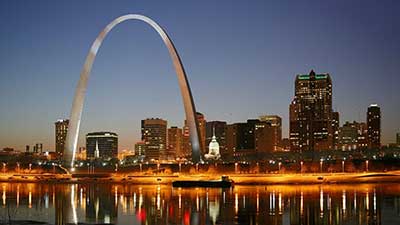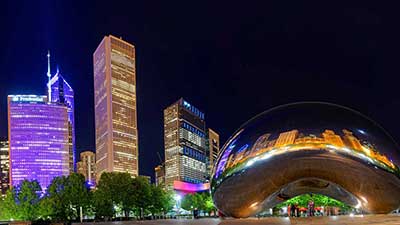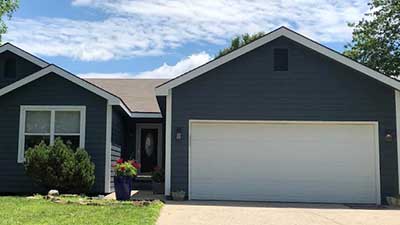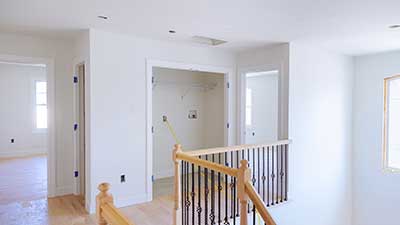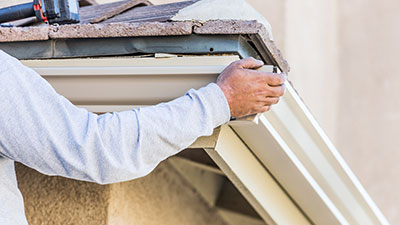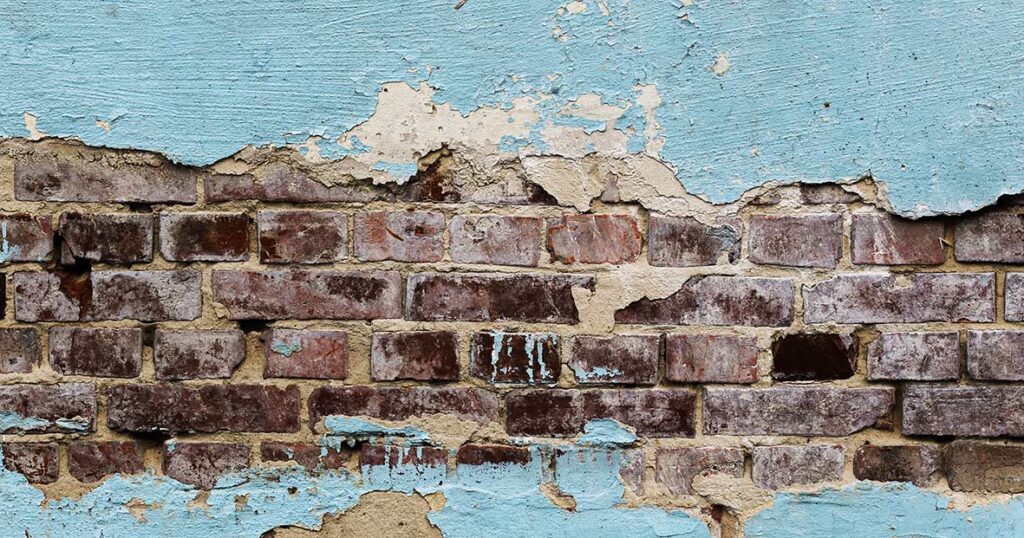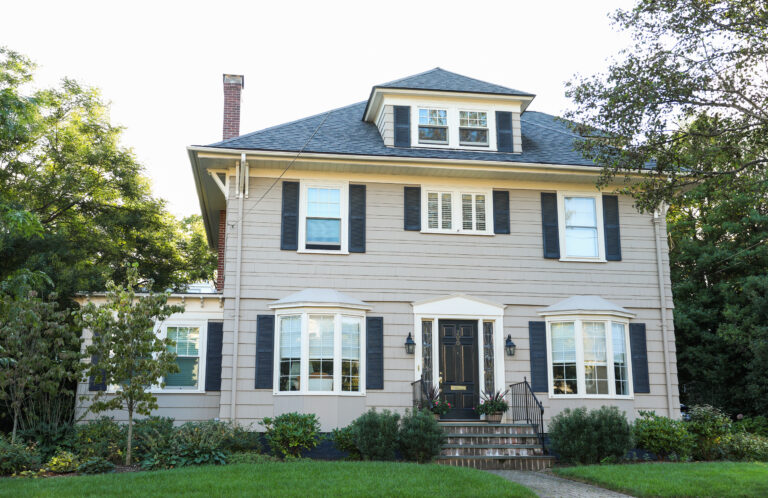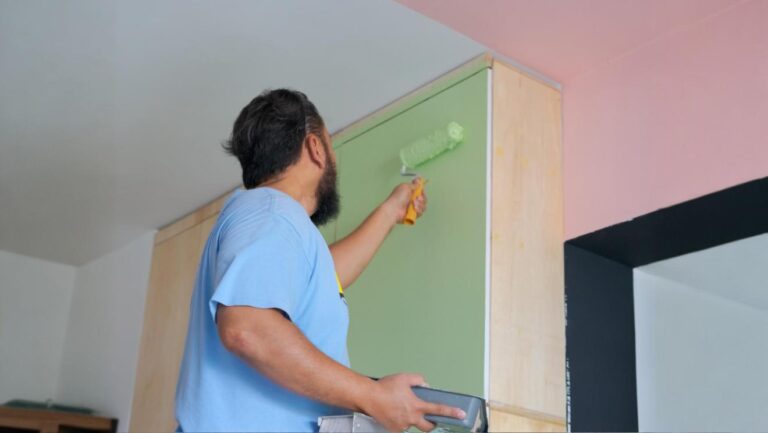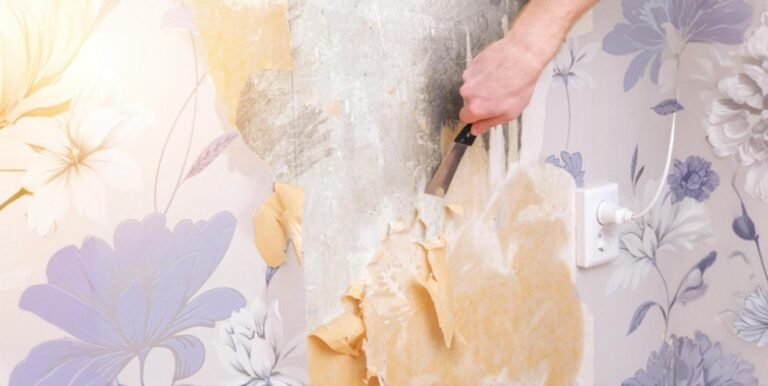Painted brick can hide the natural character of your home’s exterior or fireplace, but the good news is you can restore that original beauty. Removing paint from brick requires patience and the right approach, but it’s absolutely doable with proper techniques.
Brick presents unique challenges because of its porous surface. Paint seeps into all the crevices and small spaces, making removal more difficult than smooth surfaces. However, with the right paint stripper and method, you can bring back your brick’s natural appeal without damaging the surface.
This guide covers proven methods to remove paint from brick safely and effectively. You’ll learn which paint stripper works best, how to protect your brick surface during the process, and step-by-step techniques that actually work.
Key Takeaways
- Paint stripper is the most effective method for removing paint from brick because it breaks down the chemical bond without damaging the porous surface.
- Always test a small area first to ensure your chosen paint removal method won’t damage the brick or reveal unwanted discoloration underneath.
- Pressure washing and sandblasting damage brick surfaces and should be avoided since these methods remove the outer layer of brick along with the paint.
- A great paint job on brick can be completely reversed with the right combination of chemical strippers, scrub brushes, and patience.
- Removing paint from brick requires elbow grease and time – rushing the process by skipping wait times makes the job much harder and less effective.
- Stripping paint off brick takes patience, but you can hire professionals like OnDemand Painters who have the experience to restore your brick safely.
How to Strip Paint from Brick: Getting Started
People paint brick for various reasons – to match home décor, cover stains, or follow design trends. But painted brick often looks dated over time, and many homeowners want to restore the original brick appearance.
Understanding Your Brick Surface
Before starting any paint removal job, understand that brick is a porous surface. This means paint doesn’t just sit on top – it soaks into the tiny holes and spaces throughout the brick face. This makes the removal process more involved than stripping paint from wood or metal.
Test Before You Start
Always test a small area first. Choose a spot that’s hidden from view, like behind furniture or in a corner. This test tells you how the brick will respond to your chosen method and whether you’ll like the final result. Sometimes brick was painted to hide damage or discoloration you might not want to expose.
Safety Preparation
Safety preparation is crucial for any paint removal project. Wear protective eyewear, gloves, a breathing mask, and a long sleeved shirt. If you’re working on a brick fireplace indoors, ensure good ventilation by opening windows and using fans. Cover floors and furniture with plastic sheeting to catch paint chips and dust.
Check if your paint contains lead before starting. Homes built before 1978 often have lead paint. If lead is present, hire professionals to handle the removal safely.
Best Paint Stripper Methods for Brick Surface
Method 1: Chemical Paint Stripper Application
Paint stripper is the most effective method for removing paint from brick without damaging the surface. Chemical paint strippers work by breaking down the bond between paint and brick, making removal much easier than scraping alone.
Step 1: Choose Your Paint Stripper Choose between liquid and gel paint strippers based on your project. Gel strippers work better on vertical surfaces like brick fireplaces because they stick to the wall without dripping. Liquid strippers work well on horizontal surfaces like brick floors.
Step 2: Select Safe Products Look for paint strippers specifically designed for masonry surfaces. These formulations are less likely to damage your brick while still providing strong paint removal power. Avoid paint strippers containing methylene chloride or N-methyl pyrrolidone, as these chemicals pose health risks.
Step 3: Apply the Stripper Apply paint stripper using a brush, working in manageable sections. Cover the painted area with a thick, even coat. The stripper needs time to penetrate the porous surface and break down multiple paint layers.
Step 4: Wait for Results Most products require 15-30 minutes of wait time, but always follow the manufacturer’s instructions. During this waiting period, you’ll see the paint start to bubble and soften. This is the stripper doing its job, breaking the chemical bond that holds paint to the brick surface.
Step 5: Test Readiness After the recommended wait time, test a small spot with a putty knife. If the paint scrapes away easily, you’re ready for the next step. If it’s still firmly attached, apply more stripper and wait longer.
Method 2: Heat and Scrape Technique
For smaller areas or when chemical strippers aren’t suitable, heat can help soften paint for easier removal.
Step 1: Use a Heat Gun Apply heat with a heat gun, keeping it moving to avoid overheating any one spot. The paint will begin to soften and bubble.
Step 2: Scrape While Warm Use a putty knife to scrape away softened paint while it’s still warm. Work quickly before the paint cools and hardens again.
This method requires more elbow grease but works well for small areas or touch-up work after using other methods.
Remove Paint Using Scrub Brush Techniques
Choosing the Right Brush for Your Brick
The type of brush you use makes a big difference in paint removal success. A wire brush works well for stubborn paint spots, but use it carefully to avoid scratching the brick surface. For most jobs, a stiff scrub brush with synthetic bristles provides good cleaning power without damaging the brick.
Step-by-Step Scrubbing Process
Step 1: Start Gentle Begin with light pressure using your scrub brush. Work in circular motions to get into all the crevices where paint hides. The porous surface of brick means paint gets trapped in small spaces that need attention.
Step 2: Increase Pressure Gradually If gentle scrubbing doesn’t remove all paint, apply more pressure. Use back-and-forth motions along with circular scrubbing to tackle stubborn spots. This is where elbow grease comes into play – removing paint from brick takes physical effort.
Step 3: Clean as You Go Rinse your brush frequently in warm water to remove paint buildup. A clean brush works more effectively than one clogged with old paint and debris.
Step 4: Focus on Problem Areas Pay special attention to mortar joints and textured areas of the brick face. These spots often hold more paint and need extra scrubbing to get clean.
Paint Removal with Muriatic Acid Solution
When to Use Muriatic Acid
Muriatic acid works well for removing stubborn paint and mineral deposits from brick surfaces. This method is particularly effective on lime-based paints and certain masonry paints that resist other removal methods.
Safety First with Acid
Muriatic acid is a powerful chemical that requires extreme caution. Work outdoors or in well-ventilated areas only. Wear protective gear including goggles, gloves, long sleeves, and pants. Keep a neutralizing solution of baking soda and water nearby for emergencies.
Step-by-Step Acid Application
Step 1: Prepare the Solution Mix muriatic acid with water according to manufacturer’s instructions. Always add acid to water, never water to acid, to prevent dangerous reactions. Start with a weaker solution and increase strength if needed.
Step 2: Apply Carefully Use a spray bottle or brush to apply the acid solution evenly across the painted brick surface. Work in small sections to maintain control over the process.
Step 3: Wait and Watch Allow the acid to work for the recommended time. You’ll see bubbling as the acid breaks down the paint. Don’t let the solution dry completely on the brick.
Step 4: Scrub and Rinse Use a scrub brush to remove loosened paint, then rinse thoroughly with warm water. Neutralize any remaining acid with baking soda solution before final rinsing.
Best Way to Remove Paint from Brick: Complete Process
The Most Effective Combined Method
The best way to remove paint from brick combines multiple techniques for maximum effectiveness while protecting your brick surface.
Step 1: Preparation Clean the brick surface with warm water and a brush to remove dirt and loose debris. This helps paint stripper work more effectively.
Step 2: Apply Paint Stripper Start with a quality paint stripper designed for masonry. Apply generously and wait for the recommended time. This does most of the heavy lifting in paint removal.
Step 3: Scrape and Scrub Remove softened paint with a putty knife, then use a scrub brush to clean remaining residue from all the crevices. Work systematically across the entire surface.
Step 4: Spot Treatment For stubborn areas, reapply paint stripper or use muriatic acid as needed. Some spots may require multiple treatments to remove all paint from the porous surface.
Step 5: Final Cleaning Rinse the entire surface with warm water to remove all chemical residues and paint particles. Allow the brick to dry completely before assessing your work.
What to Avoid When Removing Paint from Brick
Methods That Damage Brick
Pressure washing might seem like a quick solution, but high-pressure water can damage the outer layer of brick and force water deep into the wall structure. Similarly, sandblasting removes paint effectively but often takes brick surface with it.
Power washing and aggressive sanding methods remove more than just paint – they can permanently damage your brick’s natural texture and appearance.
Common Mistakes
Don’t rush the process by skipping wait times for chemical strippers. The stripper needs time to penetrate the porous surface and break down paint layers. Trying to scrape too early makes the job much harder and less effective.
Conclusion
Removing paint from brick takes patience and the right approach, but the results restore your brick’s natural beauty. Start with proper safety preparation, choose the right paint stripper for your surface, and be prepared to put in some elbow grease with scrub brush techniques.
For large areas like entire house exteriors or complex brick fireplaces, consider hiring professionals like OnDemand Painters. We have the experience and proper equipment to handle big paint removal jobs safely and efficiently, saving you time and ensuring great results without damage to your valuable brick surfaces.
Remember, the best method combines chemical paint strippers with proper scrubbing techniques and patience. Your brick’s original beauty is worth the effort to restore it properly.
FAQs
What type of paint remover works best on brick surfaces?
Chemical paint strippers designed for masonry work most effectively because they penetrate the porous surface without causing damage.
Can I use a pressure washer to remove paint from brick?
No, pressure washers can damage the outer layer of brick and force water deep into the wall structure.
How long does it take to strip paint from brick?
The process typically takes several hours to a full day depending on the size of the area and number of paint layers.
What safety equipment do I need for removing paint from brick?
Wear protective eyewear, gloves, breathing mask, long sleeved shirt, and ensure good ventilation during the process.
Will removing paint damage my brick fireplace?
When done properly with the right methods, paint removal won’t damage your brick fireplace and will restore its natural beauty.
What should I avoid when stripping paint from brick?
Avoid pressure washing, sandblasting, and aggressive sanding methods that can permanently damage your brick’s surface and texture.
